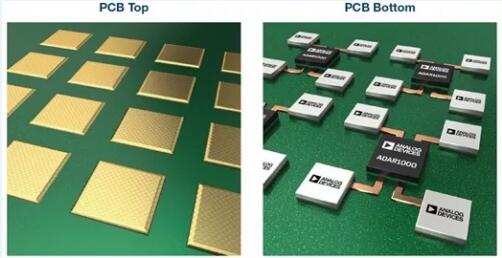When the transition of FR-4 PCB materials to higher performance materials is usually not as simple as people can imagine. When the transition is obvious, many unexpected problems may need to be solved. Some of these problems may be related to circuit design, others may be related to PCB manufacturing process.
Due to the loss of circuit performance, the transition from FR-4 PCB material to high frequency PCB material is necessary. For a particular circuit, the acceptable amount of insertion loss may vary from application to application. The loss of materials is classified by loss factor (DF), which is quite subjective for low loss, medium loss and high loss materials. According to experience, this paper classifies them as follows: DF value of high loss material is 0.015 or higher, which is quite common value for many FR-4 materials; some high performance FR-4 materials have lower loss, some of them have DF value of 0.010, these materials are classified as medium loss materials; low loss materials usually have DF value of 0.004 or less; very low loss materials It has a DF of 0.002 or less. There is a gray area between low loss and medium loss materials with DF range of 0.004-0.010.
In addition to the differences in loss, switching to high frequency materials may require significant design changes. These changes are mainly due to the fact that FR-4 materials have a dielectric constant (DK) of about 4.2-4.5, while many high-frequency laminates have very low DK values. Changes in DK may lead to impedance differences, so it is often necessary to change the wiring layout in design. In addition, the thickness of the FR-4 laminate may not vary with the expected thickness of the laminate to maintain the desired thickness of the laminate.

Another problem is related to PCB manufacturing process. Some high frequency materials are based on PTFE, which may require different processing parameters than FR-4 materials.
FR-4 has other promoting factors. Due to the demand of high frequency industry, most high frequency materials have more stringent DK tolerance than FR-4, and the thickness control of substrate is also more strict. These strictly controlled laminate characteristics are very beneficial to the construction of controllable impedance plate with narrow impedance. In addition, high frequency materials are often made to have very low moisture absorption, which may be more important for performance gain than the lower DF of the material for some applications. In addition, high frequency materials are usually made with low temperature coefficient of dielectric constant (tcdk), which is a measure of the change of DK with temperature. For some applications, tcdk may be more important than loss, which is another reason for using high frequency laminates.
Fortunately, new PCB materials are constantly developing, many of which are bridges between FR-4 PCB material to high frequency PCB material. For example, Rogers kappa 438 Gamma It has many properties similar to the FR-4, while providing many advantages related to high-frequency materials. Its DF value is 0.005, which is not lower than that of the real low loss material, but the loss is obviously improved compared with FR-4 material with medium loss or high loss. Kappa 438 Gamma It has been developed to have the same DK as many commonly used FR-4 materials, which has a DK of 4.38, which means that when replacing the FR-4, it can be used without significant changes to the circuit design. In addition, its DK tolerance is more stringent than most FR-4 materials with an accuracy of ± 0.05. Kappa 438 Gamma Its CTE is in the range of high-level PCB structure, and can use the same process as FR-4.
Of course, for PCB structures, when changing to any different material, it is recommended that PCB manufacturers optimize the process of materials in each specific construction. But the good news is that if you have to switch from the FR-4 to high-frequency, low loss materials, there are still a lot of materials that technicians can choose from.
To learn more about Rogers kappa 438, please click: Rogers third generation hydrocarbon resin ceramic PCB material kappa 438